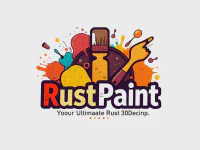Effective DIY Rust Treatment Solutions for Every Problem

A Comprehensive Guide to DIY Rust Treatment
Rust is a common problem that affects metal surfaces, causing deterioration and damage over time. Tackling rust can be an overwhelming task, but with a little knowledge and effort, you can carry out effective DIY rust treatment to restore and protect your belongings. This guide covers various methods, prevention techniques, essential tools, cost-effective solutions, and environmental impacts of DIY rust treatment.
When it comes to DIY rust treatment, there are several strategies you can employ to eliminate rust and prevent its return. From household products to specialized techniques, understanding these options will empower you to maintain your metal items, ensuring their longevity and functionality. Whether it’s a beloved tool, outdoor furniture, or your vehicle, a proactive approach to rust management is crucial.
To get started with DIY rust treatment, it's important to address existing rust damage while taking steps to prevent future occurrences. Regular inspection and maintenance can save you time and money in the long run. This article discusses both treatment and preventive measures, equipping you with the information needed to keep rust at bay.
So, if you're weary of looking at those unsightly rust spots, roll up your sleeves and read on! This comprehensive guide covers the ins and outs of DIY rust treatment, making it accessible for everyone from beginners to seasoned DIYers.
For those looking to preserve their metal tools and equipment, exploring various methods of DIY rust treatment can be incredibly beneficial.
Let’s dive deeper into effective methods for DIY rust treatment that you can apply at home, ensuring your metal surfaces remain protected and rust-free!
Methods for DIY Rust Treatment
One of the simplest and most common DIY rust treatment methods involves using vinegar and baking soda. Vinegar is an acid that effectively dissolves rust, while baking soda acts as a gentle abrasive. Simply soak the rusted item in vinegar for a few hours, then scrub it with a mixture of baking soda and water, allowing you to remove surface rust in an eco-friendly manner.
Applying commercial rust converters is another popular method in DIY rust treatment. These products typically contain chemicals that react with the rust to form a protective barrier, preventing further corrosion. They are easy to use; simply follow the manufacturer's instructions for best results, and you can effectively stop rust in its tracks.
Electrolysis rust removal technique is an advanced yet effective method of DIY rust treatment. By submerging the rusted object in a solution of water and baking soda, along with a battery charger, you create electrolysis. The process effectively lifts rust from the metal surface, making it look new again. This method requires safety precautions but yields fantastic results.
Sandblasting and abrasive methods are also effective for DIY rust treatment, especially for larger surfaces or heavy rust. These techniques involve using sand or other abrasive materials to literally blast away rust. It’s essential to use protective gear and follow safety protocols, as the process can create dust and debris.
Another natural approach is rust treatment with lemon juice and salt. The citric acid in lemon juice can break down rust, while salt acts as an abrasive. Mix the two, apply them to the rust spots, and let them sit before scrubbing. It's a safe and eco-friendly option for smaller objects.
Prevention Techniques in DIY Rust Treatment
To ensure the longevity of metal surfaces, applying protective coatings is crucial. Coatings such as wax, oil, or specialized sealants provide a barrier against moisture and rust formation. Regular application can help maintain that protective layer and prevent rust from developing.
Keeping metal surfaces dry is equally important in preventing rust. Moisture is a primary contributor to rust formation, so storing items in dry conditions and wiping down surfaces after exposure to water can help keep them rust-free.
Using rust-resistant paints is another effective preventive strategy. Not only do they add a protective layer, but they also enhance the appearance of your items. When painting, ensure you properly prepare the surface to maximize adherence and effectiveness.
Monitoring humidity and temperature in storage areas can significantly reduce rust risk. Consider using dehumidifiers or silica gel packs to control moisture levels and create an optimal environment for your metal belongings.
A regular maintenance routine, including inspections for early signs of rust, will help catch problems before they escalate. Prompt action and care can significantly prolong the lifespan of your metal belongings.
Tools for Effective DIY Rust Treatment
To effectively tackle rust at home, you’ll need certain essential tools for rust removal. These may include wire brushes, sandpaper, scrapers, and cleaning cloths. Having a variety of tools will help you address different levels of rust damage on your items.
There are numerous products available that enhance DIY rust treatment, such as rust remover solutions, protective coatings, and rust converters. Selecting the right products can greatly improve your treatment outcomes and prolong the effectiveness of your efforts.
Homemade remedies for rust treatment are often just as effective as commercial products. Whether it's vinegar, baking soda, lemon, or even potatoes, many household items can be repurposed for rust removal, making treatment not only effective but often budget-friendly.
Safety equipment is crucial in DIY rust treatment to protect yourself from dust and chemical exposure. Gloves, goggles, and face masks should be used during treatment to ensure your safety while working with rust removal products and techniques.
Choosing the right type of brush or sandpaper is also key in the rust treatment process. Different brushes and paper can effectively address various rust levels, helping you achieve optimal results without damaging the underlying metal surface.
Cost-Effective DIY Rust Treatment Solutions
Many DIY rust treatment methods are budget-friendly. Utilizing readily available household products like vinegar, baking soda, and lemon juice keeps costs low while effectively treating rust problems.
You can use leftover household products as a rust treatment solution, reducing waste and saving money. Items such as old paint, oils, or even food items can serve dual purposes in your rust treatment efforts.
When evaluating the cost of commercial versus DIY solutions, remember that many DIY methods are significantly less expensive without sacrificing effectiveness. Understand the costs and benefits of each solution to make informed choices for your rust treatment.
Creating a DIY rust treatment kit can streamline the process, ensuring you always have necessary supplies on hand. By stocking up on essentials like vinegar, baking soda, brushes, and gloves, you’ll be ready to tackle rust whenever it arises.
Long-term savings can be achieved with DIY treatments, as investing time and money in effective rust management can prevent the need for costly replacements. Regular maintenance and treatment can help extend the lifespan of your items significantly.
Environmental Impact of DIY Rust Treatment
Eco-friendly rust treatment options are abundant, with many DIY methods utilizing natural ingredients that are safer for the environment. Choosing vinegar and baking soda over harsh chemicals not only minimizes damage to your surroundings but also promotes sustainability.
Minimizing waste in DIY projects is essential to reducing environmental impact. Using leftover materials, recycling old items, and opting for biodegradable cleaners can contribute to a more sustainable approach to rust treatment.
Choosing sustainable materials for treatment, such as eco-friendly paints and rust inhibitors, supports environmental health. Look for products that emphasize low toxicity and biodegradable ingredients to ensure your treatments are gentle on the planet.
The impact of traditional versus DIY methods on the environment can be significant. Traditional methods often use non-biodegradable chemicals, while DIY approaches can leverage eco-friendly alternatives that reduce pollution and chemical runoff.
Finally, recycling and disposing of rusted metal appropriately is vital for environmental conservation. Many local scrap yards accept rusted metal, ensuring they are processed properly rather than ending up in landfills.
